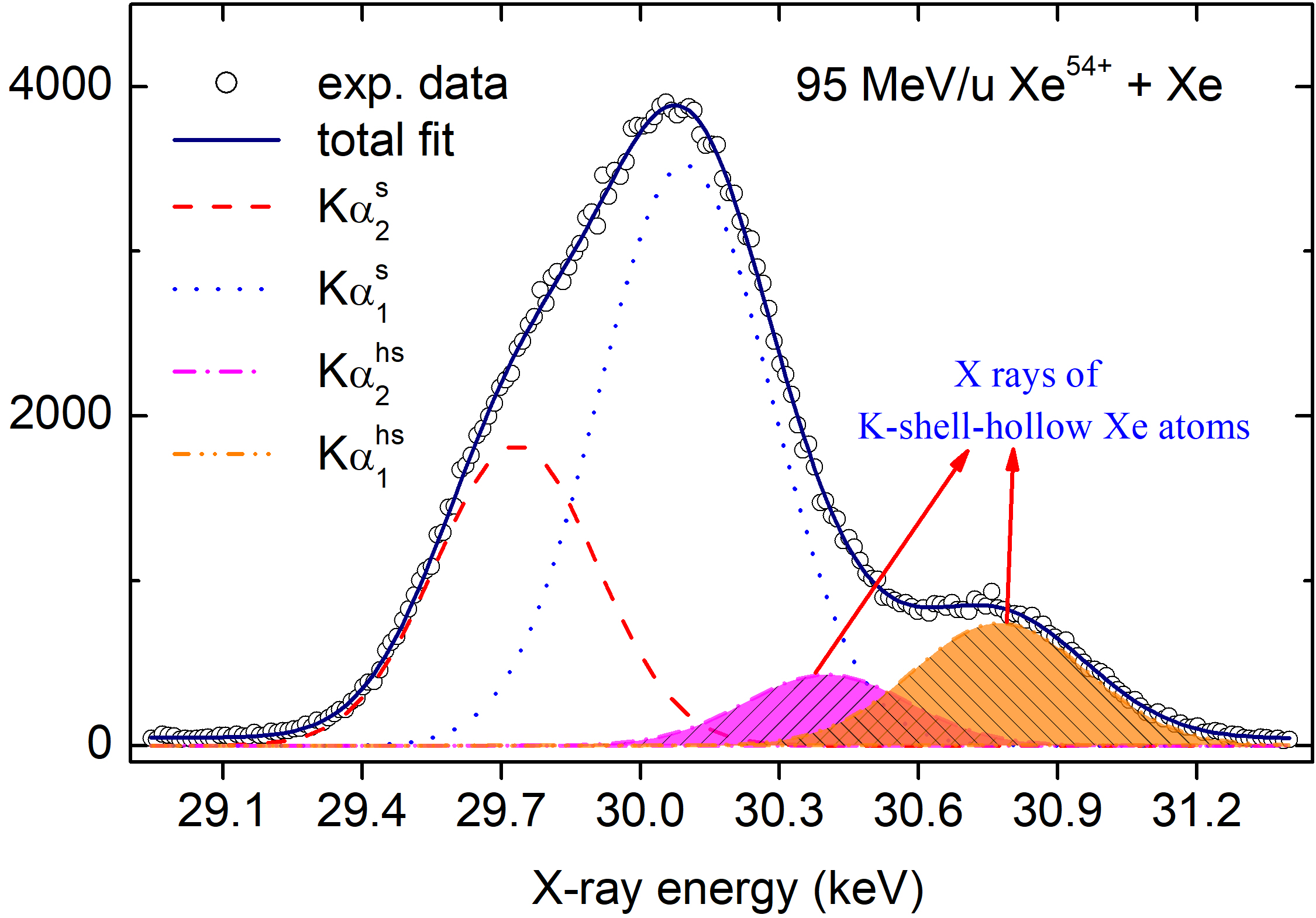Studies Offer New Insights into Production and Structure of Heavy Hollow Atoms
Hollow atoms are special atoms with multiple missing electrons in their inner shells, while their outer shells are still fully or partially filled with electrons. Studying the production mechanisms, internal structure, and de-excitation properties of these excited-state atoms provides insights into quantum electrodynamics and quantum many-body interactions, with applications in fields such as inner-shell ionization X-ray lasers, high-energy density physics, and molecular imaging.
Researchers at the Institute of Modern Physics (IMP) of the Chinese Academy of Sciences (CAS) have recently confirmed that the fully stripped heavy ion-atom collision is an effective way to produce heavy hollow atoms in high yield. They have also developed a high-resolution planar crystal spectrometer for measuring the fine structure of inner-shell multi-ionization ion X-rays. The results have been published in Spectrochimica Acta Part B: Atomic Spectroscopy and Physical Review A.
Efficient production and systematic study of heavy hollow atoms have long posed significant challenges. To address this challenge, researchers at IMP conducted an experiment of fully stripped xenon ions colliding with xenon targets, utilizing the cooling storage ring at the Heavy Ion Research Facility in Lanzhou (HIRFL).
By measuring the X-ray spectra of the target atoms after the reaction, researchers found that the relative yield of hollow xenon atoms can be up to 28.6% higher than that of K-shell single-vacancy xenon atoms. The result indicates that fully stripped heavy ion-atom collision is an effective method for the high-yield production of heavy hollow atoms.
To further investigate the generation and de-excitation characteristics of such hollow atoms, researchers independently developed a compact, high-resolution, broadband planar crystal spectrometer. This spectrometer features a unique geometric configuration optimized for the X-ray spectra characteristics of multi-vacancy ions, significantly improving precision and convenience.
Additionally, the newly developed spectrometer achieves a dynamic range of 0.53-19.3 keV and a single-exposure bandwidth of 0.04-6.58 keV within a compact space, with energy spectral resolution exceeding 102 across the entire dynamic range. When using mosaic crystals, its detection efficiency is more than 20 times higher than that of traditional planar crystal spectrometers.
These achievements lay a good foundation for conducting relevant research at HIRFL, the Low Energy high intensity heavy ion Accelerator Facility (LEAF), and the High Intensity Heavy-ion Accelerator Facility (HIAF).
This work was led by Associate Prof. SHAO Caojie from IMP. Associate Prof. SONG Zhangyong and Associate Prof. WANG Wei are the first authors of the papers. The research was supported by the National Key R&D Program and the National Natural Science Foundation.

Figure 1. Kα satellite and hyper-satellite lines emitted by the hollow xenon atoms. (Image from IMP)

Figure 2. Structural diagram of the spectrometer (left) and typical test results (right). (Image from IMP)
DOI:
https://doi.org/10.1016/j.sab.2025.107256
https://doi.org/10.1103/PhysRevA.111.032807
Contact Information
Institute of Modern Physics
Email: LIU Fang


 甘公网安备 62010202000713号
甘公网安备 62010202000713号


